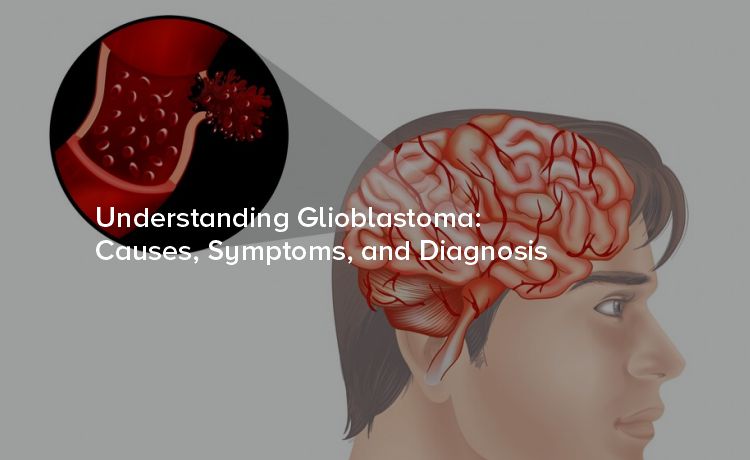
Brain cancer is a daunting diagnosis, and glioblastoma is one of its most aggressive forms. If you're here, you might be searching for answers about this challenging condition. Whether you're a patient, a loved one, or just someone curious about medical science, understanding glioblastoma is crucial.
Glioblastoma, also known as glioblastoma multiforme (GBM), is a fast-growing and highly invasive brain tumor. It originates from glial cells, which support and protect neurons in the brain. Unfortunately, glioblastoma can spread quickly within the brain, making it difficult to treat. Understanding its origins and structure is the first step in combating this formidable foe.
While the exact cause of glioblastoma remains unclear, several risk factors have been identified. Age is a significant factor, with the majority of cases occurring in individuals over 50. Genetic mutations also play a role, particularly changes in the TP53 gene, which normally helps suppress tumors. Exposure to radiation, either from previous cancer treatments or environmental sources, can increase the risk. Finally, a family history of glioblastoma or other cancers may predispose individuals to this condition.
Glioblastoma symptoms can vary widely, depending on the tumor's size and location in the brain. Common symptoms include persistent headaches, often worse in the morning or after physical activity. Seizures are another early warning sign, even in individuals with no prior history of epilepsy. Changes in personality or cognitive function, such as memory loss or difficulty concentrating, can also indicate the presence of a brain tumor. Other symptoms may include nausea, vomiting, blurred vision, and speech difficulties.
Diagnosing glioblastoma begins with a thorough medical history and physical examination. Your doctor will ask about symptoms, family history, and any previous exposure to risk factors. This initial assessment helps guide further diagnostic steps and ensures that all potential causes are considered.
Imaging studies are crucial in diagnosing glioblastoma. Magnetic resonance imaging (MRI) is the gold standard, providing detailed pictures of the brain's structures. An MRI can reveal the size, shape, and location of the tumor, as well as any swelling or pressure on surrounding tissues. In some cases, a contrast agent is injected to highlight abnormal areas more clearly. Computed tomography (CT) scans may also be used, particularly if MRI is unavailable or contraindicated.
While imaging studies are essential, a biopsy is often necessary to confirm glioblastoma. During this procedure, a small sample of the tumor is removed and examined under a microscope. This allows doctors to determine the tumor's grade and specific characteristics, which are critical for developing an effective treatment plan. Biopsies can be performed through a needle inserted into the brain or during surgery to remove the tumor.
Advancements in genetic testing have provided new insights into glioblastoma. By analyzing the tumor's DNA, doctors can identify specific mutations and molecular markers that may influence treatment decisions. For example, the presence of certain genetic alterations can make tumors more responsive to targeted therapies. Genetic testing also helps researchers develop new treatments and improve existing ones.
Early detection of glioblastoma can significantly improve outcomes. Regular check-ups and prompt attention to unusual symptoms are vital, especially for those with known risk factors. Early diagnosis allows for more effective treatment options, potentially slowing the tumor's growth and improving quality of life.
There are several treatment options for glioblastoma, each with its own benefits and challenges. Surgery is often the first step, aiming to remove as much of the tumor as possible. Radiation therapy uses high-energy beams to kill cancer cells and shrink the tumor. Chemotherapy involves drugs that target and destroy cancer cells, often used in combination with radiation therapy. Emerging treatments, such as immunotherapy and targeted therapies, offer new hope for patients, attacking the tumor at a molecular level.
Living with glioblastoma requires ongoing symptom management and support. Medications can help control pain, seizures, and other symptoms. Physical therapy, occupational therapy, and speech therapy can assist in maintaining function and independence. Support groups and counseling provide emotional support and coping strategies for patients and their families.
Ongoing research is essential in the fight against glioblastoma. Scientists are exploring new treatments, such as gene therapy and personalized medicine, which tailor interventions to the individual’s genetic makeup. Clinical trials offer patients access to cutting-edge therapies and contribute to the advancement of medical knowledge. While glioblastoma remains a challenging diagnosis, advances in research provide hope for better treatments and, ultimately, a cure.
Glioblastoma is a formidable opponent, but understanding its causes, symptoms, and diagnostic methods is the first step in the battle. Early detection and a comprehensive treatment plan can improve outcomes and quality of life. Find the best neuro physician in Hyderabad at Citizens Specialty Hospital.
Dr M. Suneetha is one of the top medical oncologists in Gurugram. He has a vast experience of more than 30 years in the field of Medical oncology. He his specialised in treating leukemia,lymphoma, hematological oncology and other complex oncology cases . He is also specialised in Bone Marrow Transplantation (BMT) treatment. He is working as a Senior Consultant, HOD, Medical Oncologist in American Oncology Institute, Gurugram.